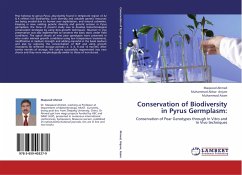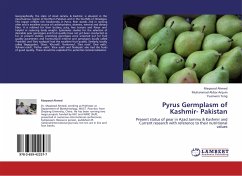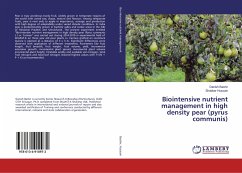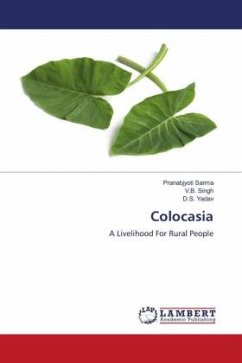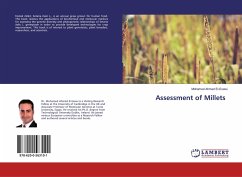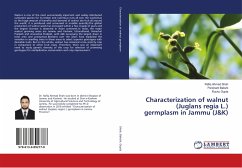Pear belongs to genus Pyrus, abundantly found in temperate region of AJ & K reflects rich biodiversity. Such diversity and valuable genetic resources are being eroded due to human over exploitation, and natural calamities. Keeping in view existing genetic diversity and genetic erosion in Pyrus germplasm, the focus of present study was to develop biotechnological conservation strategies by using slow-growth techniques. However in vivo preservation was also implemented to conserve the basic stock under field conditions. The apical shoots of nine pear genotypes were preserved in vitro under minimal growth conditions using low temperature treatments, modification in medium strength and adding mannitol in the basal medium and also by reducing the concentration of BAP and using growth retardants for different storage periods i.e. 3, 6, 9 and 12 months. After twelve months of storage, the culture successfully regenerated into new shoots and they were morphologically similar to those of non-stored.

